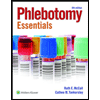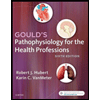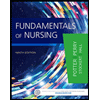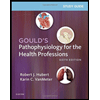
A 48 year old patient is post-op 24 hours from a traditional hysterectomy with left salpingo-oophorectomy. The client had a history of uterine fibroids and an enlarged left ovary. Traditional approach was chosen over laparoscopy because of the client's history of obesity, and DM type 2. She was recovered in the PACU and transferred to the surgical unit. The nurse taking care of her had these findings:
- Temp - 99.7 oral, P102, iR18, BP 92/50 supine, SPO2 95% on room air
- Pain 9/10 to incision site
- Noted abdominal surgical dressing, intact, with serosanguinous drainage.
- moderate abdominal distension
- bowel sounds audible in all 4quadrants
- Patient with reports of nausea, nut no vomiting.
Questions:
1. What signs and symptoms are of concern in this patient's presentation?
2. What could these be telling you is happening to the patient?
3. Of the concerning symptoms, which of these is a priority? Please explain your answer.
4. What can we do to stabilize this patient? Why?
Trending nowThis is a popular solution!
Step by stepSolved in 5 steps

- Question: Can you make an Overall and Summary of the given Case Scenario? INFANT WITH TETRALOGY OF FALLOT Case Scenario: Baby Pearl, a 9-month-old girl presents to the emergency department with his mother,who reports episodes of tachypnea, cyanosis, and irritability during feeding. The mother explainsthat these episodes have become more frequent, with baby Pearl becoming more cyanotic aroundthe mouth and fingers especially when crying (tet spells) when she was around 7 months old.These episodes resolve spontaneously but are occurring every few days. The mother breastfeeds every 3 hours, but sometimes takes a long time to feed. She alsoobserved that baby Pearl becomes diaphoretic with feeding, and stops frequently to catch herbreath while feeding. She reported to the nurse that vomiting the milk (sometimes goes out fromthe nose) and becomes more frequent after feeding. The patient currently appears comfortable,with no signs of respiratory distress, fever, or neurological impairment.…arrow_forward11:07 < Back CASE #3DISCUSSI... Case #1 Patient is an 89 year old male admitted with Hyperkalemia, ESRD, HTN, and Bladder Cancer. Patient's past medical history includes recurrent bladder carcinoma, CVA, hernia repair and hemodyalisis. Patient was admitted due to weakness and 2 weeks of diarrhea for which he had refused to be dialyzed for 7 days. Patient lives at home with wife and daughter who are both his healthcare surrogates. Based on patient's poor prognosis, oncologist had recommended on previous admissions that patient be made Hospice Care with comfort measures. Case #1 Cont. Daughter and wife have refused Hospice care and want patient to be dialyzed and continue aggressive treatment to include full resuscitation if cardiopulmonary arrest. Daughter and wife have requested all physicians to refrain from speaking to patient about his prognosis. At this time all physicians have followed daughter and wife's request not let patient know that his cancer has returned, except for the…arrow_forwardCASE HISTORY 2 The patient was a 19-year-old male who was brought to the emergency room by his sister. He gave a 24-hour history of dysuria and noted some “pus-like” drainage in his underwear and on the tip of his penis. Urine appeared clear, and urine culture was negative although urinalysis was positive for leukocyte esterase and multiple white cells were seen on microscopic examination of urine. He gave a history of being sexually active with five or six partners in the past 6 months. He claimed that he and his partners had not had any sexually transmitted diseases. His physical exam was significant for a yellow urethral discharge and tenderness at the tip of the penis. (A Gram stain done in the emergency room is shown in Fig. 1). He was given antimicrobial agents and scheduled for a follow-up visit 1 week later. He did not return. QUESTIONS: What pathogen caused the disease? Briefly describe the epidemiology and pathogenesis of this disease. What is the morphology and staining…arrow_forward
- Instructions: Using an ICD-10-CM code book, assign the proper diagnosis code(s) to the following diagnostic statements. Please be aware that when an answer consists of more than one code, there will be an answer blank for each code. "delivery with retained placenta with manual removal of retained placenta, 42 weeks" 3 codesarrow_forwardA 62-year-old man who is a chronic smoker with a history of widespread atherosclerotic vascular disease complains of a 3-h history of severe midabdominal pain, accompanied by nausea and vomiting. He has a history of myocardial ischemia and peripheral vascular disease. On examination, he is writhing in pain. His abdomen has normal bowel sounds and minimal tenderness. A small amount of blood is present in the stool specimen. The electrolytes show a low bicarbonate level at 15 mEq/L, and the serum lactate level is high, which are indicative of tissue receiving insufficient oxygenation leading to tissue injury. A surgeon, who is concerned about mesenteric ischemia, has been called to evaluate the patient. Which of the following is the most likely diagnosis? Appendicitis Cholecystitis Gastritis Superior mesenteric thrombosis Amebic colitisarrow_forwardI need the ICD-10-CM codes and ICD-10-PCS codes for : The pstient had an elective abortion performed at another facility two days earlier. She visited the. linic begause of pelvic pain, fever, and non-bloody discharge. She was given antibiotics. Diagnosis:Acute endometritis following abortionarrow_forward
- What is the pathognomonic sign of Abortion? Please include book reference.arrow_forwardA 28-year-old woman presents with a concern about a lump she has found in her right breast. It first appeared three months ago. It changes with her menstrual cycle and is nontender to the touch. On physical exam, there are no contour changes or retractions noted. Likewise, the patient has no axillary, supraclavicular, or infraclavicular adenopathy. Which of the following descriptions correlates with the most likely diagnosis, that is considered benign in prognosis? Answers: A-D A Erythematous and edematous right breast, tender and warm to touch B Nodular, rope-like densities throughout the right breast; highly tender C Single, firm 1 x 2 cm mass, fixed with overlying thickened skin with enlarged pores; minimally tender D Round, 1 cm freely mobile, the well-delineated mass that is firm in consistency: nontenderarrow_forwardThe patient was admitted straight from her primary care physician's office to the medical floor. She is a 29-year-old woman without a history of chronic illnesses, household medications, or prior surgical procedures. She gave her primary care physician a 4-day history of fever, coughing, and appetite loss. She claims that for the previous two days, she has not eaten or drunk anything. The primary care physician observed that the patient was experiencing dyspnea in the office and proceeded to send the patient by ambulance to the hospital. Which conditions should the PN keep an eye out for in the client given the present course of treatment for fluid volume deficit? select all that apply Phlebitis Hypokalemia Hyperglycemia Diarrhea and vomiting Alkalosis Pulmonary edema Thrombocytopenia Hypovolemic shockarrow_forward
- Please answer the questions base on the information. Nurse note: Pt who was at home treating her right foot infection with VNA support. VNA recommended she return to the hospital because she was not caring for herself. The pt has not been able to get up and walk around including going to the bath. She complains of discomfort with swallowing and so she is not consistently taking her medication. She denies chest pain and shortness of breath. She is dysphagia, stage 2 plantar heel ulcer and at her butt. Has bruises on both hands, both legs is discolor and peeling. High fall risk and wear diapers. Pain is 7 on a scale of 0-10 at her coccyx wound. Normal bowl sounds and lungs sounds and heart sound. Cellulitis of right lower extremities. Cardiac diet and hypertension. Vitals at 800: Vitals at 11:20Am: Pulse: 99 HR: 72 SPO2: 99. BP: 144/97 BP: 135/82. R: 17 Temp: 95:4 HR:70 1. What is causing the abnormal lab values in YOUR PATIENT? 2. Are the abnormal lab values at the patient's…arrow_forwardA 12-year-old girl has the sudden onset of severe abdominal pain and back pain. On physical examination her abdomen is diffusely tender, but there are no masses. She is afebrile. A CBC shows Hgb 6.5 g/dL, Hct 19.0%, MCV 99 fL, platelet count 149,000/microliter, and WBC count 11,200/microliter. Examination of her peripheral blood smear shows nucleated RBCs and sickled RBCs. Which of the following types of gene mutation is she most likely to have? O Insertion • Missense O Nonsense O Splice site O Duplication O Deletion.arrow_forwardA 29-year-old woman, gravida 2 para 2, comes to the emergency department with fever, crampy abdominal pain, and right flank pain 8 days after an uncomplicated vaginal delivery. Temperature is 38.3 C (101 F) and blood pressure is 110/60 mm Hg. Physical examination shows tenderness in the right lower quadrant and flank. The patient is hospitalized and started on intravenous antibiotics for presumed postpartum endometritis, but her fever persists. Urine and blood cultures show no bacterial growth. CT scan of the abdomen and pelvis reveals right ovarian vein thrombosis. If this patient remains untreated, she is at risk for extension of the thrombus into which of the following vessels? Inferior vena cava Right common iliac vein Right internal iliac vein Right renal vein Right uterine veinarrow_forward
 Phlebotomy EssentialsNursingISBN:9781451194524Author:Ruth McCall, Cathee M. Tankersley MT(ASCP)Publisher:JONES+BARTLETT PUBLISHERS, INC.
Phlebotomy EssentialsNursingISBN:9781451194524Author:Ruth McCall, Cathee M. Tankersley MT(ASCP)Publisher:JONES+BARTLETT PUBLISHERS, INC. Gould's Pathophysiology for the Health Profession...NursingISBN:9780323414425Author:Robert J Hubert BSPublisher:Saunders
Gould's Pathophysiology for the Health Profession...NursingISBN:9780323414425Author:Robert J Hubert BSPublisher:Saunders Fundamentals Of NursingNursingISBN:9781496362179Author:Taylor, Carol (carol R.), LYNN, Pamela (pamela Barbara), Bartlett, Jennifer L.Publisher:Wolters Kluwer,
Fundamentals Of NursingNursingISBN:9781496362179Author:Taylor, Carol (carol R.), LYNN, Pamela (pamela Barbara), Bartlett, Jennifer L.Publisher:Wolters Kluwer, Fundamentals of Nursing, 9eNursingISBN:9780323327404Author:Patricia A. Potter RN MSN PhD FAAN, Anne Griffin Perry RN EdD FAAN, Patricia Stockert RN BSN MS PhD, Amy Hall RN BSN MS PhD CNEPublisher:Elsevier Science
Fundamentals of Nursing, 9eNursingISBN:9780323327404Author:Patricia A. Potter RN MSN PhD FAAN, Anne Griffin Perry RN EdD FAAN, Patricia Stockert RN BSN MS PhD, Amy Hall RN BSN MS PhD CNEPublisher:Elsevier Science Study Guide for Gould's Pathophysiology for the H...NursingISBN:9780323414142Author:Hubert BS, Robert J; VanMeter PhD, Karin C.Publisher:Saunders
Study Guide for Gould's Pathophysiology for the H...NursingISBN:9780323414142Author:Hubert BS, Robert J; VanMeter PhD, Karin C.Publisher:Saunders Issues and Ethics in the Helping Professions (Min...NursingISBN:9781337406291Author:Gerald Corey, Marianne Schneider Corey, Cindy CoreyPublisher:Cengage Learning
Issues and Ethics in the Helping Professions (Min...NursingISBN:9781337406291Author:Gerald Corey, Marianne Schneider Corey, Cindy CoreyPublisher:Cengage Learning





